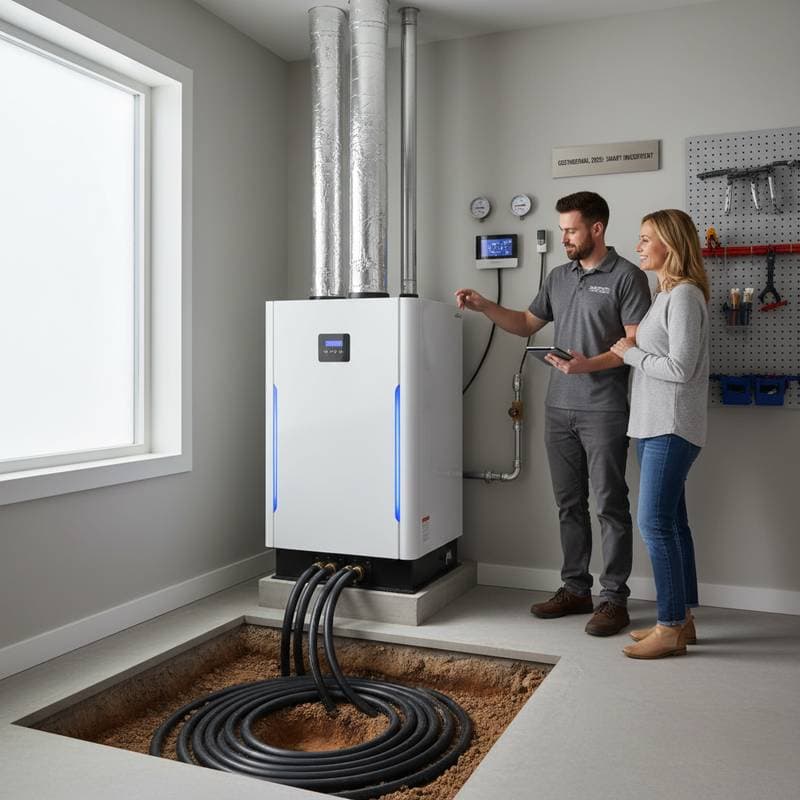Key Points
- Recent tax credits significantly lower the barriers to home electrification for those who navigate eligibility criteria with precision.
- Layering federal tax credits, state rebates, and financing tools can diminish initial outlays by up to 50 percent.
- Thoughtful upgrade sequencing, beginning with electrical panel enhancements, facilitates seamless installations and amplifies cumulative savings over time.
- Opting for products certified under recognized programs guarantees superior performance, durability, and alignment with incentive qualifications.
The Value of These Incentives for Homeowners
Sustainable home improvements once seemed like optional extravagances. Now, they represent essential components of sound financial strategy. Residences equipped with energy-efficient systems incur lower operational expenses, experience accelerated appreciation, and foster superior indoor air quality.
Tax credits directly mitigate a portion of upgrade expenditures. For instance, qualifying heat pump installations may yield a credit equivalent to 30 percent of costs, subject to annual caps. Integrating these with utility rebates and local programs can compress the recovery timeline for substantial investments to mere years.
Electrification delivers tangible reductions in utility bills, often ranging from 20 to 40 percent. Across the lifespan of these systems, such efficiencies accumulate into substantial financial gains. The incentives serve to expedite this positive return, making the transition both feasible and rewarding.
Developing an Effective Electrification Plan
Rushing into large-scale changes without groundwork risks forfeiting potential benefits. A structured approach promotes system harmony, adherence to building codes, and optimal fiscal outcomes.
Step 1: Evaluate Electrical Infrastructure
Many older residences possess insufficient panel capacity to accommodate additional electric demands. Transitioning to a 200-amp service panel establishes a robust foundation for subsequent additions, such as electric vehicle chargers or photovoltaic arrays. These panel modifications qualify for their own incentives, often recouping expenses through enhanced safety and versatility.
Step 2: Target Upgrades with Greatest Impact
Heating and cooling dominate household energy use. Prioritizing a high-efficiency heat pump installation generates prompt cost reductions and lays the groundwork for broader electrification. Subsequent phases can then incorporate electric water heaters and induction cooking surfaces.
Step 3: Incorporate Renewable Sources
Complementing electrified appliances with rooftop solar or community solar subscriptions amplifies both economic and environmental advantages. Eligible battery storage solutions further qualify for credits, offering backup power during disruptions and diminishing grid reliance.
Real-World Financial Projections and Returns
Consider a $20,000 investment in a comprehensive heat pump system for the entire home. A 30 percent tax credit lowers the effective expense to $14,000. Assuming the replacement of outdated gas units yields a 30 percent drop in energy bills, recovery typically occurs within six to nine years, influenced by regional utility rates.
Incorporating a $2,000 panel upgrade, which attracts its own credit, might trim costs by an additional $600 while unlocking possibilities for EV infrastructure or solar integration. Viewed comprehensively, these incentives can cover 40 to 50 percent of overall electrification expenses. The outcome includes a streamlined, healthful living space with reduced running costs and enhanced market appeal.
Professional Advice for Maximizing Incentives
Experienced installers stress the importance of meticulous record-keeping and project timing. Each credit demands substantiation through manufacturer specifications and itemized receipts. Maintain both electronic and physical records to facilitate claims.
Energy specialists advocate for a thorough professional audit prior to commencing projects. Such evaluations pinpoint high-yield interventions and confirm that enhancements work in tandem. From a funding angle, aligning tax credits with low-rate improvement loans preserves capital. Specialized green lenders provide tailored options for sustainable initiatives.
Addressing Prevalent Myths
A frequent assumption holds that incentives necessitate comprehensive overhauls. Partial transitions remain eligible; swapping a single gas water heater for an electric heat pump variant secures efficiency improvements alongside credits.
Some perceive electric operations as more expensive. Contemporary heat pumps employ variable-speed technology that maintains efficacy in low temperatures. Ultimately, reduced energy demands paired with incentives surpass fossil fuel alternatives in cost-effectiveness.
Others suppose restrictions based on income levels. Although select rebates impose thresholds, tax credits extend to all qualifying filers irrespective of earnings.
Frequently Asked Questions
Must upgrades occur simultaneously?
No. Implement changes incrementally across years. Annual credit renewals allow for optimized timing to heighten overall rebates.
What if my contractor lacks incentive expertise?
Select firms versed in qualified projects. Knowledgeable professionals manage paperwork and supply requisite certifications.
Is stacking federal credits with local rebates permitted?
Yes. Rebates typically apply initially, with credits computed on the adjusted amount, compounding benefits.
Do self-installed systems qualify?
Usually not. Professional oversight ensures adherence to efficiency and safety benchmarks.
Do these enhancements boost home worth?
Indeed. Electrified, efficient properties attract quicker sales and premium pricing owing to savings and livability.
Steps to Launch Your Electrification Journey
Home electrification stands within reach for every owner. Through deliberate planning, phased execution, and incentive awareness, convert your space into a model of efficiency and durability. Begin with an assessment today to unlock these advantages.









